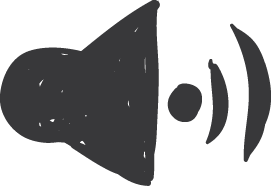In this topic you will study the reflexive pronouns. Reflexive pronouns can be identified because they have either the –self ending for singular or the –selves ending for plurals. Reflexive pronouns are used for two main purposes. Reflexive pronouns are used to express that someone performs an action AND that the action is received by that same person. Look at the following two sentences and compare them:
Mary cut a piece of paper with a knife.
Mary cut herself with a knife.
Reflexive pronouns are also used to emphasize someone in the sentence. Look at the following conversation:
A: My children cooked dinner last night.
B: Did you help them?
A: No, I didn’t do anything. They cooked dinner themselves.
Reflexive pronouns will help you express your ideas and describe situations more accurately and more clearly.
At the end of this topic, you will:
Conceptualize structures that involve the ‘doer’ or subject of the action as a ‘receiver’ or object of the actions, and structures where the subject can carry out an action on his/her own using reflexive pronouns to indicate suggestions, duties, compromises and necessities compared with Spanish.

OpenClipart-Vectors. (2013). Pensamiento / imaginación / creativa [graphic]. Retrieved on May 2017 from https://goo.gl/RFTZ1O
To start our topic, first, we need to recap some basic, but fundamental, concepts, which are the base of what we have to study here. We are sure you can answer the next question:
A pronoun is a word that may be substituted for a noun, in other words its main function is substituting the noun. Once this noun is replaced, it is called the pronoun antecedent. In short, pronouns can substitute nouns, and we use them to avoid being repetitive.
Without pronouns, we would have to keep on repeating nouns every time we want to talk about a person, animal, place or thing that we have mentioned before. We can use pronouns to make your speech or writing flow better.
There are many kinds of pronouns, however, to understand better our topic, we are focusing on two of them:
The relationship between these two kinds of pronouns is essential to recognize the usage of reflexive pronouns.
Subject pronouns perform the action in a sentence, they are the ‘doers’ of the action, it means that they are the subjects. The position of a subject pronoun is before the verb.
Object Pronouns are those pronouns that receive the action in a sentence. Object nouns are always the recipients in sentence. Their position is always after the verb. Look at the next example:
‘My brother helps orphans’
In this sentence ‘my brother’ is doing the action, it is the subject. To replace ‘my brother’ with a pronoun, we use ‘he’.
Now, ‘orphans’ are the object because they are receiving the action of the subject –my brother’s help-. To replace ‘orphans’ with a pronoun we use ‘them’. Is it clear for you?? ...Of course!!! It is very easy, right?
So far, we have finished our review. It is time to check reflexive pronouns.
As any other pronoun, reflexive pronouns are used to replace a person, animal, place or thing to avoid repetition. Reflexive Pronouns are:
Personal Pronouns |
Reflexive Pronouns |
|---|---|
I |
myself |
You |
yourself |
He |
himself |
she |
herself |
It |
itself |
We |
Ourselves |
You |
Yourselves |
They |
themselves |

Pixaline. (2016). Check this / youtube / Shield [graphic] Retrieved on May 2017 from https://goo.gl/mefb6K
Notice the change in the plural forms where you change the ending –elf into the ending –elves.
As you could see in the chart, be careful if you are using YOU in plural because the reflexive is ‘yourselves’. The context can help you notice the difference.
Now, it is important to check some usage rules of this kind of pronouns, so analyze the following rules:
As we mentioned in the previous section, in most sentences, somebody does something to someone else, for example:
I love him
He told her a story
However, sometimes people (or things) do something to themselves and this is when you can use reflexive pronouns.
I love myself
He introduced himself at the party.
Use a reflexive pronoun when the subject and the object in a sentence refer to the same person or thing. A reflexive pronoun indicates that the person who is doing the action of the verb is also the recipient of the same action.
Kim looked at herself in the mirror
(the subject and the object are the same)
Kim looked at her in the mirror
(the subject and the object are different. Kim is looking at someone else –a woman- in the mirror)
Look at the next comparative chart:
Different subject and Object |
Same Subject and Object |
|---|---|
Tim saw me |
I saw myself in the mirror |
Why does he blame you? |
Why do you blame yourself? |
David sent him a copy |
John sent himself a copy |
David sent her a copy |
Mary sent herself a copy |
My dog hurt the cat |
My dog hurt itself |
Can you help my children? |
Can you help yourselves? |
They cannot look after the babies |
They cannot look after themselves |
He accidentally cut himself while he was chopping the vegetables
She bought a present for herself
The dog is scratching himself
They injured themselves
We can use reflexive pronoun as a direct object with most transitive verbs but the most common are:
Amuse |
Dry |
Hurt |
Prepare |
Blame |
Enjoy |
Introduce |
Satisfy |
Cut |
Help |
Kill |
Teach |
Another way of using reflexive pronouns is when we use them for emphasis, in this case they are referred to as intensive pronouns:
The author signed the book for me herself.
I did it myself.
I spoke to the president himself.
(speaker emphasizes that he spoke to the president personally, NOT to somebody else
I always do my homework myself. (Nobody helps me.)
There are a number of verbs in English which we rarely or never use reflexive pronouns. We don’t use reflexive pronouns after verbs which describe things people usually do for themselves or everyday activities such as wash, shave or dress.
He washed himself in cold water.
He always shaves himself before going out.
They include: adapt, complain, concentrate, get up, hide, lie down, meet, move, relax, remember, shave, shower, sit down.
After a preposition of place or location we use an object pronoun and not a reflexive pronoun:
He put the backpack next to him.
We use verb reflexive pronoun object when we do something for ourselves
She cooked herself a quiche
We taught ourselves French
We use verb object reflexive pronoun when we want to emphasize that another did not do the action (or assist):
I repaired the tire myself
They did the homework themselves
My brother spoke to his boss himself about a rise
Use ‘by’ myself, yourself or himself, when we are alone or not with another person. When we want to show that someone did something alone and or without any help.
Jason went to the party by himself
His children were swimming by themselves
She lived by herself
Emma was sitting by herself
Once you have seen how to use reflexive pronouns, it is time to test yourself in the topic with some grammar exercises.
From what you have learned in the lesson, choose the best option to complete the sentence. Do your best and check your answers at the end to verify your learning.
Drag the different options to the appropriate spaces to complete the sentences. You have two attempts to answer the exercise. You can know your score at the end of the exercise.
Now it is time for you to produce some sentences! Look at the pictures and write a sentence that describes the picture, using the verb below each picture. Don’t forget to use the correct reflexive pronoun. At the end compare your sentences with the suggested answers.
Activity 1
Once you have reviewed and practiced the grammar of reflexive pronouns. It is time to ckeck your language skills using reflexives. Ready?
Let’s start by reading!
In this text you will read the story of a person who is living by himself for the first time
By doing this activity you will identify the appropriate usage of reflexive pronouns.
Activity 1.1: Activate your Knowledge
Activity 1.2 Reading Comprehension: Reflexive Pronoun Usage
Activity 1.3 After reading I: Identify the sequence of events.
Activity 1.4. After Reading II: Vocabulary from context
Activity 2
One of the most evident activities we can do by ourselves is learning. Nowadays, there are many ways of self-learning, one of them is on-line learning. Today, public, private and home schools provide education.
In this activity you will find double benefit practicing with reflexive pronouns and knowing about homeschooling.

IowaPolitics. (2012). Homeschooling - Gustoff family in Des Moines 009 [photo]. Retrieved on May 2017 from https://goo.gl/xMmSPM
First, think about the following questions:
Have you heard about homeschooling?
Do you know what it is?
Do you know anyone who is homeschooled?
Would you like to study at home?
Activity 2.1: Before listening: Pros and cons
Activity 2.2: Listening for details
Activity 3
Activity 3.1 Before writing: reflecting about personal growth phrases.
Sometimes, reflection about our personal growth can be done using few words. In fact, most of the times, too much can be said with too little. And this is exactly what we are going to do with this task.
In this first part you will find some pictures with personal growth phrases. The phrases use reflexive pronouns. Read all the phrases and choose the one you consider the most meaningful for your personal growing. Because you are going to write a paragraph about this phrase.
Once you have selected your phrase, think about the next questions and answer them in 3 steps:
What is the meaning the phrase? What is the idea the author is transmitting to people?
Why do you think that? Why is it meaningful for you? Do you have any personal experience about it? Think about some reasons or examples to support your answer.
What is your opinion about the message? Why should people follow it? What is the importance of a message like this?
Activity 3.2 Argumentative Writing
With the information you have from the previous activity you are going to write a paragraph.
Write an argumentative paragraph (80-130 words) about the phrase you chose.
An argumentative paragraph shows a point of view and gives evidence or support for such point of view.
An argument is an opinion supported by evidence. This evidence could be reasons, facts, expert research or personal experience.
To write your paragraph consider the 3 steps you followed before:
Topic sentence: describe the main point of your argument: What is the meaning of the phrase? What is the idea the author is transmitting to people?
Support sentences: include facts, examples, personal experiences, reasons to back up your point of view: Why do you think that? Why is it meaningful for you? Do you have any personal experience about it?
Present your reasons in order of importance: from the most important to least important.
Concluding sentence: confirms the position you stated at the beginning: What is your opinion about the message? Why should people follow it? What is the importance of a message like this?
Useful transitional words and phrases:
For giving reasons
First, second, third, another, next, last, finally, because, since, for
For counter-argument
But, however, of course, nevertheless, although, despite
For concluding
Therefore, as a result, in conclusion, thus
For writing your paragraph, you must follow the guidelines below:
Paragraph Structure: You must include the 3 steps and the answers to the questions in each of them. (4 pts.)
Grammar: You must use at least 3 reflexive pronouns in your paragraph. Your paragraph must include grammar correctness.
Vocabulary: use of phrases to express opinions or transitional phrases suggested in the presentation.
Spelling: correct spelling in the sentences.
Length: 80-130 words.
Take a look at the following example:
You can verify your text on: https://languagetool.org/
When your paragraph is ready, remember to check your work with the following checklist:
Activity 4
Activity 4.1 Before speaking: think about this and take notes.

TeroVesalainen. (2017). Buisness / People / Silhouette / Teamwork [graphic]. Retrieved on May 2017 from https://goo.gl/9qpPTq
Having the perfect job is one of the most precious things when people think about personal development. Simply because it represents self-fulfillment. One might think that the perfect job is one that gives you a lot of money, however for some others the perfect job is which gives you personal satisfaction.
What is the perfect job for you?
Think about the next questions and answer them using a reflexive pronoun, follow the example in the first sentence.
As in the example, answer the following questions to form your own idea about what the best job probably is.
Don’t forget to take your notes.
Activity 4.2 Expository speaking
Use your answers and notes from the previous exercise to make a short oral presentation about what the best job for you would be. Organize your presentation in the following order:
So you can understand how you will be evaluated, consider the next list:
Task Content: Answers for all the questions and follow the structure to organize your speech.
Grammatical Structure: Complete sentences in your answers, include:
Vocabulary: vocabulary checked in the lesson, verbs and vocabulary in the questions.
Fluency: You sound natural in your answers, not too many hesitations or pauses.
To record yourself, you can use your cellphone or Vocaroo.
Click on the “Audio” button to listen to an example:

When your recording is ready, check your work using the following checklist.
In this test you will have the opportunity to test your knowledge about reflexive pronouns. From what you reviewed in this lesson choose the best option to complete the sentence.
• Englisch-hilfen.de. (s.f) Reflexive pronouns, self-pronouns – Exercise. Retrieved on July 5th, 2017 from http://bit.ly/1D1j41V
• Ginger Sotware. (s.f.) Reflexive Pronouns. Retrieved on August 5th, 2017 from http://bit.ly/1Xabn4r
• Learn English Feel Good. (s.f.) Reflexive Pronouns. Retrieved on August 5th, 2017 from http://bit.ly/2vxzp52
• Education Corner. (s.f.) Benefits and Disadvantages of Homeschooling. Retrieved on August 5th, 2017 from http://bit.ly/2vGd31e
• Internet Encyclopedia of Philosophy: A Peer Reviewed Academic Resource. (s.f.) [Entry: Autonomy]. Retrieved on August 5th, 2017 from http://bit.ly/2uhSVi9
• School Money. (s.f.) Homeschooling: Advantages and Disadvantages. Retrieved on August 5th, 2017 from http://bit.ly/2hCwW3C
• Our Kids. (s.f.) Homeschooling vs Private School. Retrieved on August 5th, 2017 from http://bit.ly/2juaabs
• The Guardian. (s.f.) Education – Homeschooling. Consulted on August 5th, 2017 from http://bit.ly/2wAZrRV
• Ginger Software. (s.f.) Pronouns. Consulted on August 5th, 2017 from http://bit.ly/2vIpsCy
• English Living Dictionaries. (s.f.) [Entry: pronouns]. Consulted on August 5th, 2017 from http://bit.ly/2uj0VUi
• Englisch-hilfen.de. (s.f) Pronouns, English Grammar Exercises. Retrieved on August 5th, 2017 from http://bit.ly/2kud3wG
• Chris Weller (August 20th, 2016). Homeschooling is the smartest way to teach kids in the 21st century. Buisness Insider. Consulted on August 5th, 2017 from https://www.independent.co.uk/life-style/homeschooling-smartest-way-to-teach-kids-a7652796.html
• Chris Weller (March 30th, 2016). Meet the 6-year-old genius who will steal the show at this year's national spelling bee. Consulted on August 5th, 2017 from https://www.businessinsider.com/akash-vukoti-is-a-6-year-old-genius-2016-3?r=MX&IR=T
• Childrens MD.org. March 25th, 2013). Parenting. 18 Reasons Why Doctors and Lawyers Homeschool Their Children. Consulted on August 5th, 2017 from http://bit.ly/JHMKMR
• Childrens MD.org. (Nov 19th, 2012). Parenting. The Underwear Machine: Teaching Kids Creative Play. Consulted on August 5th, 2017 from http://bit.ly/1S8NXMn
• Jamie Martin. (2012). Homeschooling 101: What Is Homeschooling?. Parents. Consulted on August 5th, 2017 from http://bit.ly/1F4aWEF
• Annalisa Barbieri. (September 10th, 2016). 10 good reasons to home school your child. The Guardian. Consulted on August 5th, 2017 from http://bit.ly/2dyiSmn